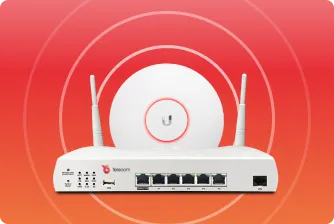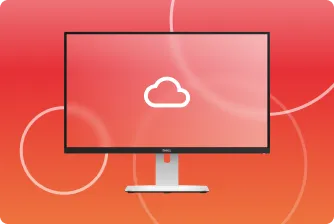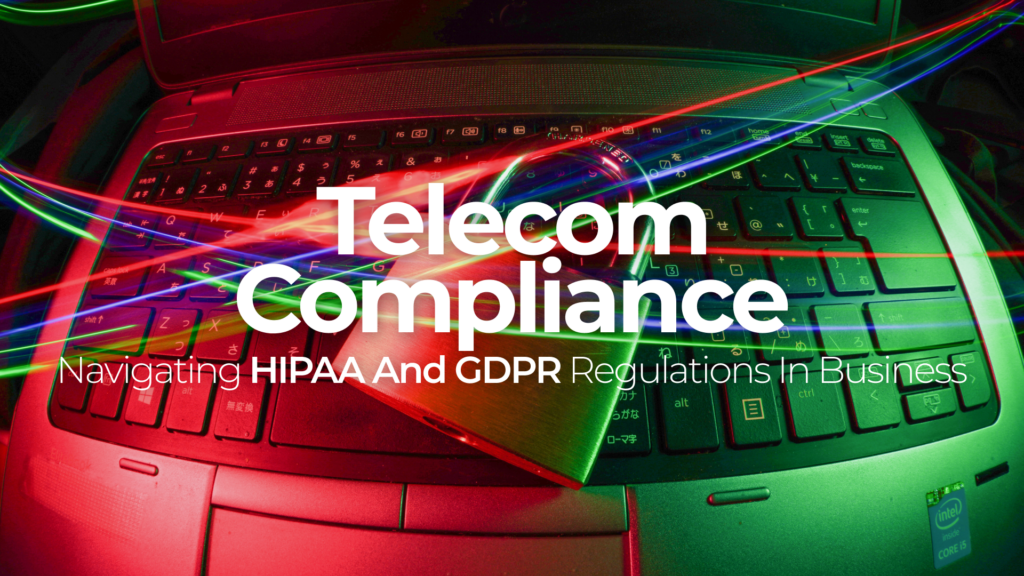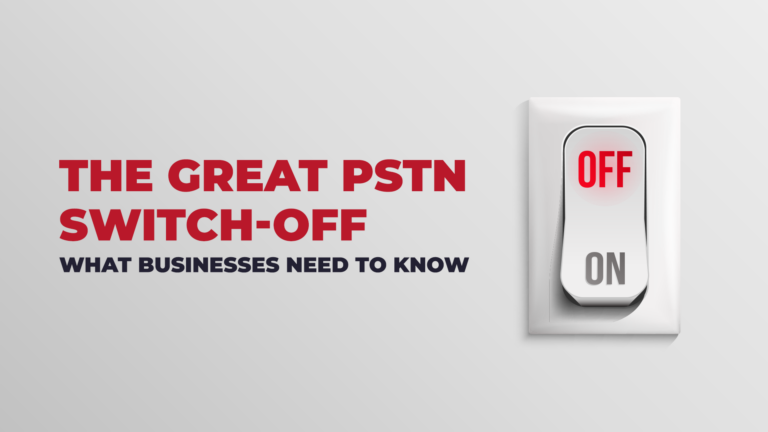Are you familiar with HIPAA & GDPR regulations?
When it comes to business communications, navigating the intricate web of legal frameworks is paramount, and two things demand meticulous attention:
- GDPR (General Data Protection Regulation)
- HIPAA (Health Insurance Portability and Accountability Act)
In this blog, we’ll delve into the critical intersection of telecom operations and these formidable regulations, emphasising the imperatives of safeguarding sensitive information and ensuring comprehensive data protection. We’ll explore the indispensable nature of understanding and adhering to these regulations, shedding light on the strategic advantages that compliance affords in fostering trust, mitigating risks, and ultimately, ensuring sustainable business growth.
Understanding HIPAA Regulations
Understanding the intricate landscape of HIPAA (Health Insurance Portability and Accountability Act) regulations is imperative for businesses seeking to navigate the complex waters of compliance. HIPAA, conceived to protect sensitive health information, establishes a robust framework encompassing data privacy, security, and confidentiality. This multifaceted legislation sets forth stringent guidelines, requiring businesses to implement comprehensive safeguards when handling Protected Health Information (PHI).
HIPAA’s impact involves a nuanced approach, from stringent control measures over communication channels to the secure transmission and storage of health-related data. The Act mandates the implementation of robust technical, administrative, and physical safeguards to ensure the integrity, confidentiality, and availability of PHI. Compliance requires a deep understanding of the intricacies involved in managing electronic PHI (ePHI), encompassing encryption, access controls, and audit trails. Non-compliance with HIPAA not only exposes businesses to legal repercussions but also jeopardises the trust of healthcare clients and their patients.
In essence, a comprehensive comprehension of HIPAA regulations is pivotal for professionals to align their operations with the highest standards of data protection and privacy, fostering a secure environment for the exchange of health information in the digital age.
Decoding GDPR
Decoding GDPR (General Data Protection Regulation) in the realm of telecommunications necessitates a profound understanding of this European Union legislation, which has far-reaching implications for global businesses. GDPR, designed to fortify data protection and privacy rights of individuals, introduces a comprehensive framework that extends its influence to the intricate processes within telecommunications. Core principles such as data minimisation, purpose limitation, and transparency dictate how businesses handle and process personal data, demanding a meticulous approach to consent and user rights.
Modern businesses find themselves entwined with GDPR due to the growing nature of data processing. From call metadata to customer information, every facet of info is subject to GDPR’s scrutiny. Consent, a linchpin of GDPR, becomes a focal point, necessitating clear and unambiguous communication with users about the purposes and extent of data processing. Challenges arise in navigating the fine line between providing seamless services and respecting user privacy.
GDPR compliance involves not only adapting to the specific requirements laid out in the regulation but also addressing the unique challenges posed by the sector. This includes managing data across borders, ensuring the security of communication channels, and fortifying measures to promptly address data breaches.
Common Ground: Overlapping Considerations
Identifying the common ground between HIPAA and GDPR is pivotal for businesses navigating the labyrinth of data protection regulations. Both frameworks converge on fundamental principles, creating an intersection that demands meticulous attention. One such shared element is the emphasis on robust data protection principles. HIPAA’s stringent safeguards for Protected Health Information (PHI) align with GDPR’s overarching commitment to protecting personal data, emphasising the need for entities to establish comprehensive measures ensuring confidentiality, integrity, and availability of sensitive information.
Security measures and safeguards form another nexus between the two regulations. Both HIPAA and GDPR mandate the implementation of robust technical and organisational measures to secure data. Encryption, access controls, and regular audits are imperative components of a compliant framework, ensuring that data remains protected against unauthorised access or breaches. This convergence signifies that businesses, dealing with a spectrum of data from health records to personal identifiers, must adopt a holistic approach to data security that accommodates the nuanced requirements of both HIPAA and GDPR.
Strategies for simultaneous compliance involve weaving a comprehensive fabric of policies and practices that address the shared considerations. Establishing clear data protection policies, conducting regular employee training programs, and instituting periodic compliance audits emerge as essential components of a strategy that not only ensures adherence to individual regulations but also addresses the overlapping requirements.
Best Practices for Telecom Compliance
Crafting a robust compliance framework demands a strategic amalgamation of best practices that address the intricacies of both HIPAA and GDPR regulations. First and foremost, businesses must establish a comprehensive compliance framework that aligns with the specific requirements of these regulations. This includes the development of detailed policies and procedures governing the handling of sensitive data, encompassing both health information protected under HIPAA and personal data protected by GDPR. Collaboration between legal, IT, and compliance teams is essential, ensuring a multidisciplinary approach that considers legal nuances, technical requirements, and operational feasibility.
Employee training and awareness programs emerge as linchpins in promoting a culture of compliance. Educating staff on the nuances of HIPAA and GDPR regulations is paramount. Regular training sessions should cover data handling protocols, the importance of consent, and the significance of reporting and addressing any potential breaches promptly.
Conducting regular compliance audits and assessments is imperative for ongoing adherence to regulations. Periodic reviews of data handling processes, security protocols, and documentation practices ensure that any deviations from the established standards are promptly identified and rectified. This proactive approach not only mitigates the risk of non-compliance but also fosters a continuous improvement mindset within the organisation, enhancing overall resilience against evolving regulatory landscapes.
Conclusion
In conclusion, mastering the intricacies of compliance within the realms of HIPAA and GDPR is not merely a legal necessity but a strategic imperative. The convergence of these formidable regulations necessitates a meticulous approach, from safeguarding health information to protecting personal data. By prioritising compliance, businesses not only mitigate legal risks but also cultivate trust among clients and users.
Here at Yo, we’re all about improving the success of the businesses we work with. So, If you are interested in learning more about improving your business development, or generally future-proofing your business – enter your contact details into the form below and we’ll be in touch about how we can help you and your business TODAY!











